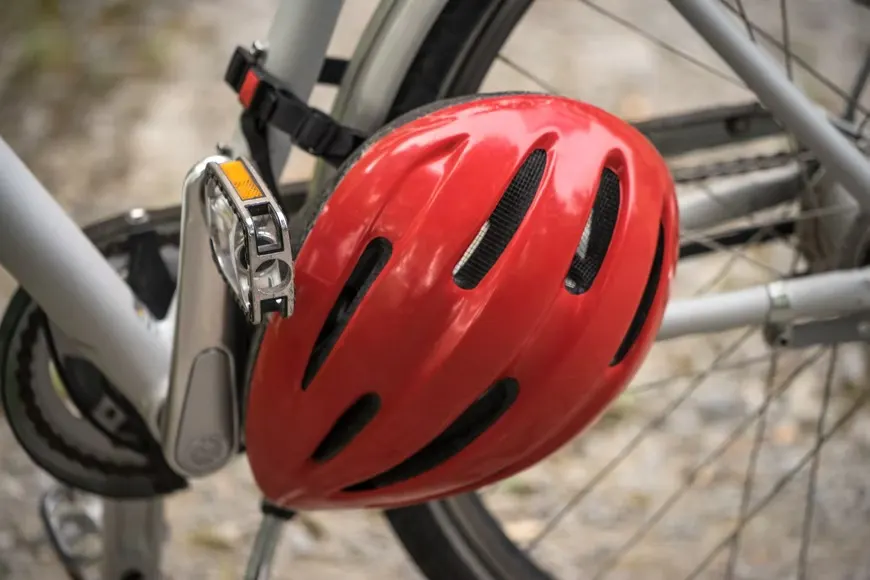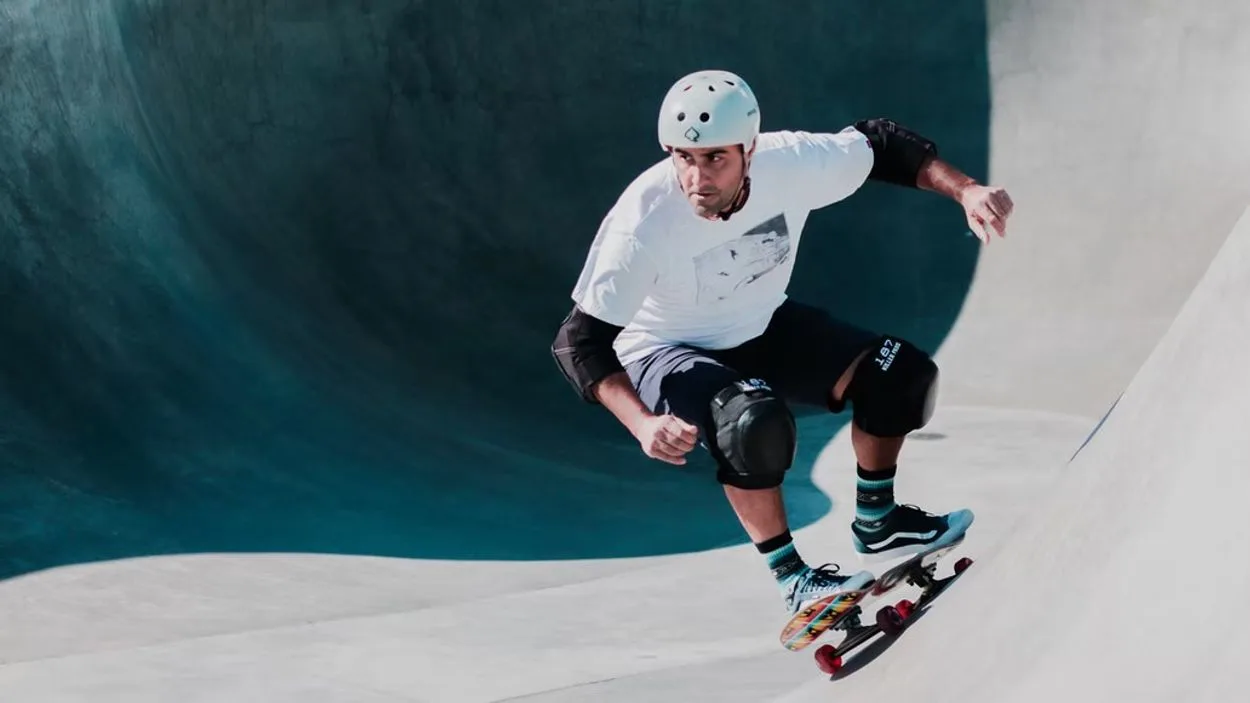Wearing a helmet while riding a vehicle whether it’s a bike or a skateboard, is a must. But is that enough? Well, it’s not just about wearing a helmet but wearing the right helmet for every ride.
A helmet is designed to protect your head from any serious injury in case you have an accident. But to ensure maximum safety your headgear should protect you in all the right ways. Therefore, not all helmets are the same.
Depending on the vehicle you are riding, your fall can vary and so can the part of your head that is at risk of collision. Therefore, the design and structure of a bike helmet can vary from a skateboard helmet.
If you think you can use one helmet for all purposes, then you’re putting your safety at risk. In this article, I have discussed all the differences between a bike helmet and a skateboard helmet so that you can make an informed decision when buying yourself a new helmet.
How Is a Bike Helmet Different From a Skateboard Helmet?

When you’re skating, you’re likely to fall backwards therefore, skateboard helmets are designed to protect the back of your head. The thick shell of a skateboard helmet can withstand multiple impacts since the probability of falling while skating is higher.
A bike helmet focuses on protecting the front and top of your head. In a bike accident, the chances of injury to the back of your head are unlikely. Since the speed and momentum when riding a bike result in a forceful collision, a bike helmet is designed to endure one severe impact rather than multiple impacts.
Bike Helmet vs. Skateboard Helmet

It can seem like buying a different helmet for every type of ride is a bit excessive, but when it comes to safety, you don’t want to take any risks. A bike and a skateboard helmet vary in shape and design and meet different safety standards to ensure maximum protection.
Speed is one of the major factors that influence the intensity of an impact when faced with an accident. Since a bike and skateboards vary in speed, their safety gears vary as well.
Let’s get into further details.
Design
A bike helmet has an outer shell of thin plastic with a thick layer of foam. The foam absorbs most of the energy of a collision or a crash protecting your head from a fracture. The thin plastic makes the helmet lightweight, resulting in a comfortable ride.
The chances of landing in an accident when riding a bike are very low, but the intensity of the collision is severe. Therefore, bike helmets are designed to handle intense pressure.
A skateboard helmet has a thick exterior to withstand multiple crashes of low intensity. Even though the likelihood of crashing while skating is high, they’re not as impactful.
Shape
The most visible difference between a bike and a skateboard helmet is the shape. A bike helmet has vents and covers the top and front of your head. A skateboard helmet is smooth with relatively fewer vents and is curved to the back of your head
Since bike helmets have a thick layer of foam, heat can be retained in the foam causing discomfort and sweat. The vents allow the air to flow through keeping your head cool and relaxed.
The skateboard helmet is shaped in a way that protects the back of your head, which is likely to get impacted.
Certification
The most important factor to consider when buying a helmet is certification. Each helmet needs to meet a specific standard of safety, depending on your country and the organization overseeing safety regulations.
These safety standards vary depending on the type of the ride, to ensure maximum safety. Each helmet has an extensive testing procedure before they’re certified for use.
The US follows two safety standards:
- CPSC (Consumer Product Safety Commission)
- ASTM (American Society for Testing and Materials)
CPSC sets the safety standards for bike helmets, and ASTM regulates the safety standards for skateboard helmets.
When buying a helmet make sure it has the right certification. Helmets without any certifications provide no safety and can endanger your life.
Style

When it comes to safety gear, style should be your last priority. It makes sense that you want to look good while skating or riding a bike, but you also want to be protected.
What shape and design of helmet appeals depends on your preference but make sure you buy a helmet for the right reason. Your priority should be if the helmet is certified to provide you with sufficient protection for your ride.
Compromising on the right style or shape of the helmet can put your safety at risk, which is just not worth it.
Durability
Both these helmets are durable for their specific rides. A bike helmet can withstand one impact after which it can’t be used again. This is because the foam lining inside a bike helmet retains the energy of an impact by compression. Once the foam is compressed it won’t be as effective.
Whereas the thick exterior of a bike helmet is designed to endure multiple collisions. Since the collisions aren’t as impactful, the helmet remains intact.
Can You Wear the Same Helmet for Biking and Skateboarding?
Wearing the right helmet is extremely important to ensure maximum protection.
If you wear a skateboard helmet while riding a bike, the absence of thick layers of foam can result in a skull fracture or worse. A skateboard helmet isn’t durable enough to withstand high-intensity impacts.
Whereas, wearing a bike helmet while skating doesn’t provide sufficient protection to the back of your head. While skating you’re likely to fall in any direction. Therefore, a skateboard helmet covers the overall surface of your head.
When Should You Replace Your Helmet?
Bike helmets can withstand only one impact. Therefore, replace them once you encounter an accident. A helmet might not show any sign of damage on the outside, but the interior of the helmet could be impaired.
For a skateboard helmet, any scratch or cracks on the surface can hinder your safety.
If there are any other defects such as a dent on the surface or a disabled strap, make sure you replace your helmet before your next ride.
Dual Certified Helmets
If you want a helmet that is a perfect fit for skating, as well as biking, you need to look for a dual-certified helmet.
A dual-certified helmet has both ASTM and CPSC certifications, which means that it’s suitable for both bikes and skateboards. The helmet is designed to provide you with full coverage to ensure safe skateboarding while also preventing severe head injury during bike rides.
This will eliminate the effort of changing the helmet every time you jump into a new activity.
Bottom Line
- “Choose the right helmet for biking or skateboarding to stay safe.”
- “Skateboard helmets protect the back of your head. Whereas bike helmets focus on the front and top.”
- “Look for CPSC and ASTM certification to ensure your helmet meets safety standards.”
- “Bike helmets handle single impacts. Whereas skateboard helmets can withstand multiple, less severe collisions.”
- “Using the wrong helmet can put your safety at risk, so pick the appropriate one for your activity.”
- “Replace bike helmets after any impact. And skateboard helmets if you notice visible damage.”
- “Consider dual-certified helmets for versatility in both biking and skateboarding.”
- “Prioritize safety to reduce the chance of serious head injuries during recreational activities.”
Related Articles
Leading VS Trailing Brake Shoes (The Difference)

